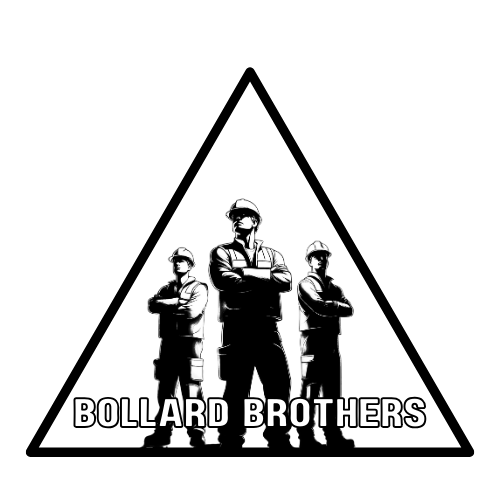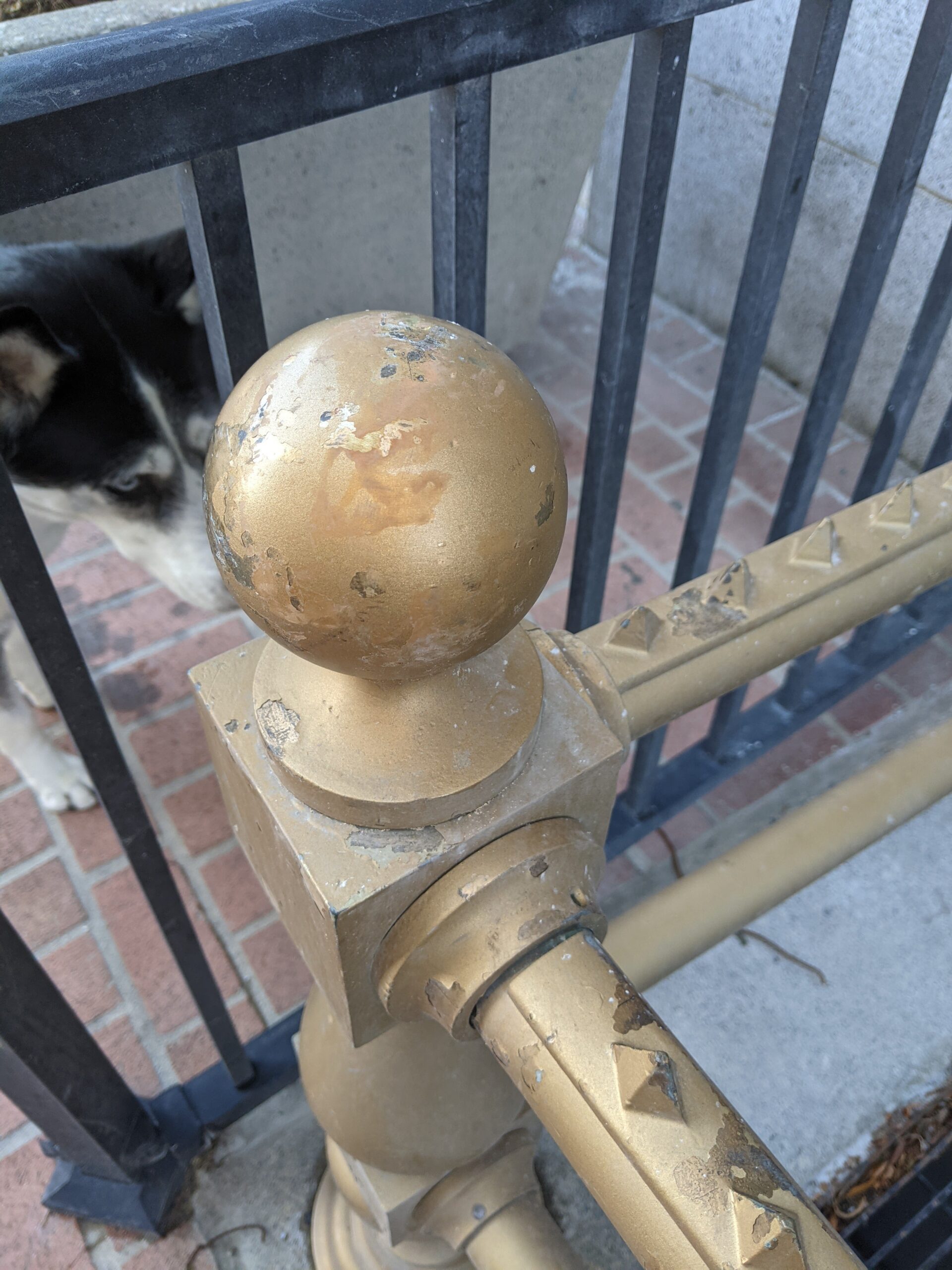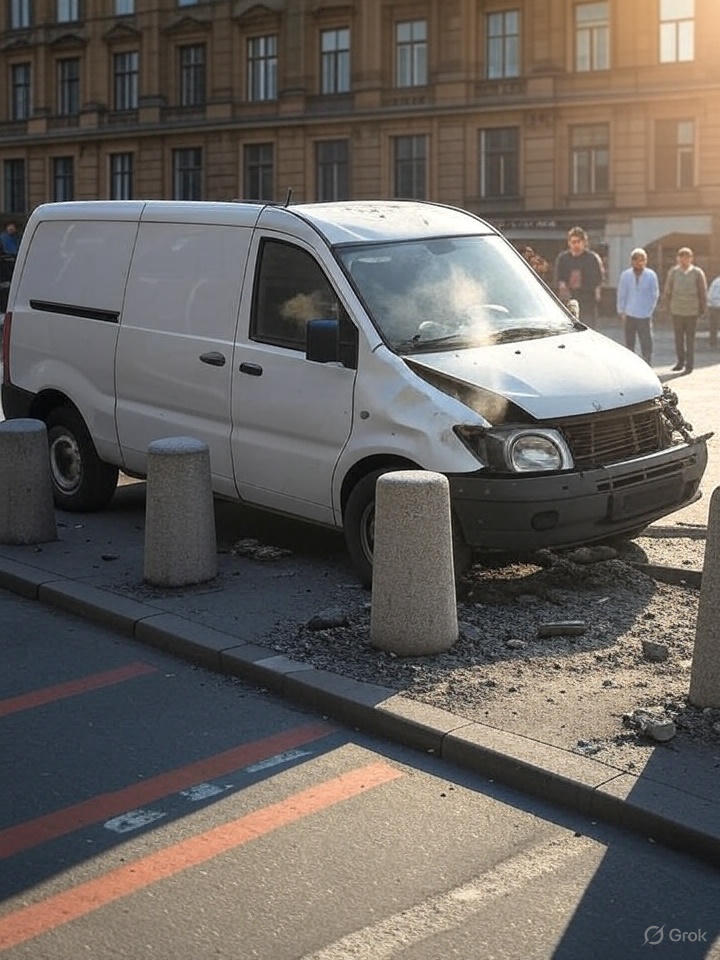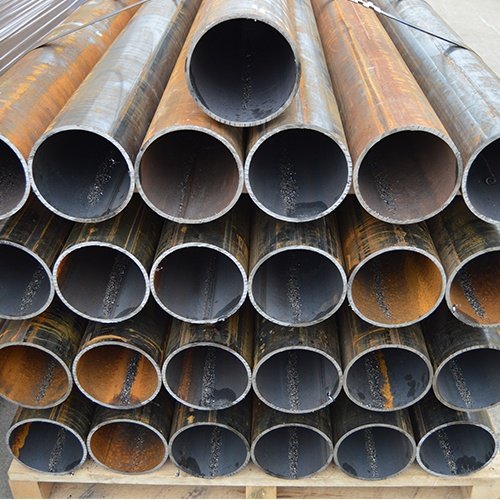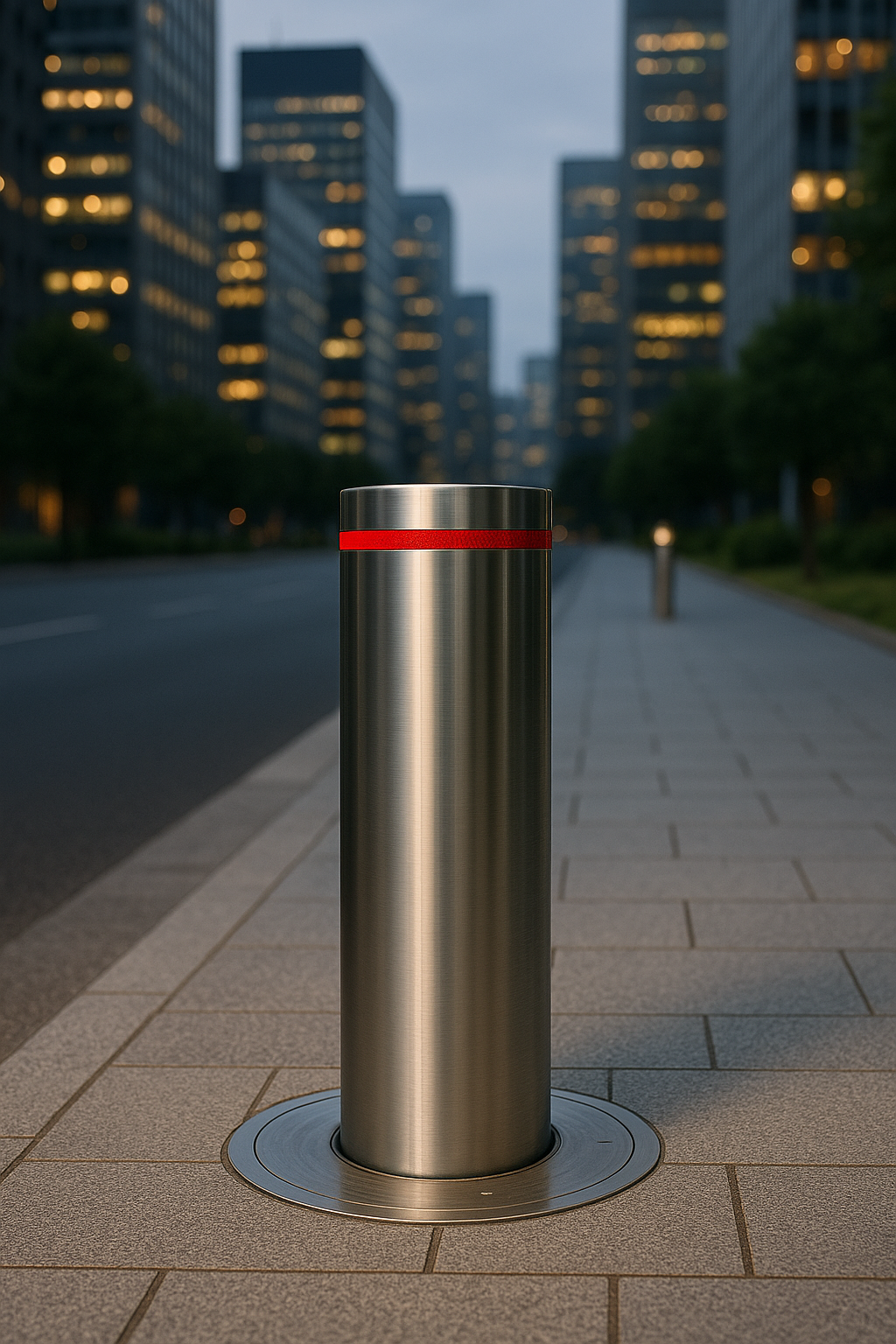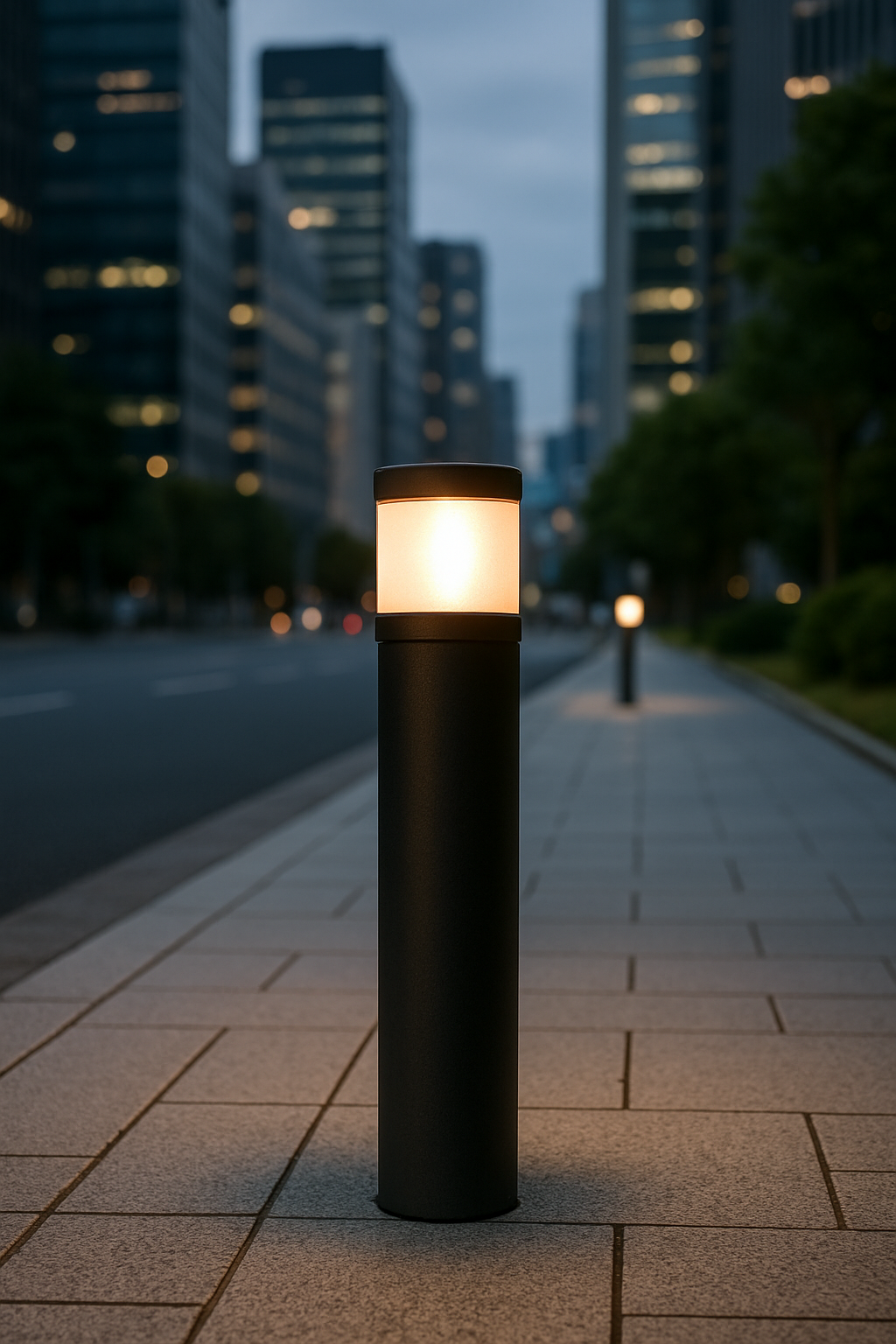By following Bollard Brothers’ detailed maintenance plan—covering routine cleaning, inspections, type-specific care, and environmental adjustments—you can ensure your bollards perform flawlessly for years.
How to Maintain Your Bollards: An In-Depth Guide to Ensuring Longevity, Safety, and Performance
Introduction
 Bollards are the unsung heroes of urban and private spaces, standing as steadfast guardians that protect pedestrians, secure properties, and enhance aesthetic appeal. Whether they’re fixed concrete barriers in a bustling city plaza, retractable pneumatic posts at a commercial entrance, or illuminated signage bollards guiding nighttime traffic, their effectiveness hinges on regular maintenance. Proper care ensures bollards remain structurally sound, visually appealing, and fully functional, safeguarding lives and investments. At Bollard Brothers, we’ve perfected the art of crafting durable, innovative bollards, and we’re committed to helping you keep them in top condition. This comprehensive guide dives deep into the maintenance process for all bollard types, offering detailed steps, expert tips, and real-world insights to maximize longevity and performance as of August 2025.
Bollards are the unsung heroes of urban and private spaces, standing as steadfast guardians that protect pedestrians, secure properties, and enhance aesthetic appeal. Whether they’re fixed concrete barriers in a bustling city plaza, retractable pneumatic posts at a commercial entrance, or illuminated signage bollards guiding nighttime traffic, their effectiveness hinges on regular maintenance. Proper care ensures bollards remain structurally sound, visually appealing, and fully functional, safeguarding lives and investments. At Bollard Brothers, we’ve perfected the art of crafting durable, innovative bollards, and we’re committed to helping you keep them in top condition. This comprehensive guide dives deep into the maintenance process for all bollard types, offering detailed steps, expert tips, and real-world insights to maximize longevity and performance as of August 2025.
Why Bollard Maintenance Is Critical
Regular maintenance is the key to unlocking the full potential of your bollards. Neglect can lead to corrosion, mechanical failures, faded signage, or compromised structural integrity, reducing safety and increasing repair costs. According to a 2024 Urban Safety Institute study, well-maintained bollards reduced operational downtime by 85% and slashed replacement costs by 30% compared to neglected ones. For crash-rated bollards, adhering to standards like ASTM F2656 or PAS 68 requires consistent upkeep to ensure they can stop a 7,500-pound vehicle at 50 mph. Maintenance also preserves aesthetic appeal, crucial for decorative bollards in historic districts or commercial properties, and ensures compliance with local regulations.
Bollard Brothers’ maintenance protocols have delivered exceptional results, with our installations achieving a 98% reliability rate across 600+ projects in 2024-2025. Whether you’re a city planner in Riverton, a retail owner in Chicago, or a homeowner in a coastal town, this guide equips you with the knowledge to keep your bollards performing at their best.
General Maintenance Principles for All Bollards
Before diving into type-specific care, let’s cover the foundational maintenance practices that apply to all bollards, ensuring they remain durable, safe, and visually appealing.
1. Routine Cleaning
Purpose: Removes dirt, grime, pollutants, and salt buildup that can corrode materials, obscure signage, or dull aesthetics.
Materials Needed:
Mild soap (e.g., dish detergent or Simple Green).
Warm water.
Soft microfiber cloths or non-abrasive sponges.
A soft-bristled brush for stubborn stains.
Optional: Pressure washer (low setting, 1,500 PSI max) for concrete bollards.
Process:
Mix a solution of mild soap and warm water (1:10 ratio).
Wipe bollard surfaces with a cloth or sponge, focusing on crevices, engravings, or reflective bands.
Use a soft brush for tough stains like bird droppings or graffiti.
Rinse thoroughly with clean water to remove soap residue, which can attract dirt.
Dry with a microfiber cloth to prevent water spots or streaks, especially on stainless steel or Ferrocast polyurethane.
For graffiti, use a specialized remover (e.g., Goo Gone Graffiti Remover) safe for the bollard’s material.
Frequency: Monthly in high-pollution urban areas or coastal regions with salt exposure; quarterly in suburban or rural settings with less environmental stress.
Special Notes:
Avoid abrasive cleaners (e.g., bleach or ammonia) on Ferrocast or stainless steel, as they can damage protective coatings.
For polished stainless steel, use a dedicated cleaner (e.g., 3M Stainless Steel Cleaner) to restore shine without scratching.
In a 2025 Riverton coastal project, monthly cleaning of Ferrocast bollards prevented corrosion, maintaining their finish after 18 months of exposure to salty air.
2. Regular Visual Inspections
Purpose: Identifies early signs of wear, damage, or structural issues, preventing costly repairs or safety risks.
Checklist:
Surface Damage: Look for dents, scratches, or cracks, especially after vehicle impacts or severe weather.
Base Stability: Check for wobbling or concrete cracking at the base, indicating foundation issues.
Signage/Reflective Elements: Ensure text, reflective bands, or QR codes are legible and intact.
Corrosion: Inspect for rust on steel or cast-iron bollards, particularly in humid or coastal environments.
Fasteners: Verify that anchor bolts or mounting screws are secure and free of rust.
Process:
Conduct a walkaround with a flashlight for detailed inspection, especially in low-light conditions.
Use a torque wrench to check bolt tightness (e.g., 50 ft-lbs for standard anchors).
Take photos of any issues for documentation and comparison over time.
Frequency: Monthly, or immediately after extreme weather (e.g., storms, heavy snow) or vehicle incidents.
Real-World Impact: In a 2024 Chicago installation, monthly inspections detected a loose anchor bolt on a fixed bollard, preventing a collapse that could have cost $2,500 to repair and posed safety risks.
3. Documentation and Reporting
Purpose: Tracks maintenance history to identify patterns, plan budgets, and ensure warranty compliance.
Process:
Maintain a digital or physical log, noting dates, cleaning tasks, inspection findings, and repairs.
Use Bollard Brothers’ maintenance app (included with installations) to log activities and receive automated reminders.
Document issues with photos and detailed notes (e.g., “Dent on north-facing bollard, 2 inches wide, no structural damage”).
Report significant damage to Bollard Brothers for warranty evaluation or repair recommendations.
Frequency: Update after each maintenance session; review annually to plan long-term care.
Tip: Share logs with property managers or city officials to ensure compliance with safety regulations, especially for crash-rated bollards.
4. Seasonal Maintenance
Purpose: Addresses environmental challenges like salt, snow, or UV exposure that vary by season.
Winter:
Clear snow and ice from bollard bases using a plastic shovel to avoid scratches.
Apply de-icing agents (e.g., calcium chloride) sparingly to prevent corrosion; rinse afterward.
Check pneumatic bollards for ice buildup in air lines, using insulated models in cold climates like Minnesota.
Summer:
Inspect for UV damage on polyurethane coatings, applying UV-resistant polish (e.g., Armor All Protectant) annually.
Clean more frequently in dusty or pollen-heavy areas to maintain visibility.
Coastal Areas: Rinse monthly with fresh water to remove salt, which can reduce material lifespan by 20% if neglected.
Frequency: Adjust cleaning and inspections seasonally (e.g., bimonthly in winter for snowy regions).
Maintenance by Bollard Type
Each bollard type—fixed, removable, retractable/pneumatic, illuminated, smart, or signage—has unique maintenance needs due to its materials, mechanics, or technology. Below is a detailed breakdown.
Fixed Bollards
Materials: Stainless steel, concrete, cast iron, or Ferrocast polyurethane.
Maintenance Tasks:
Cleaning: For stainless steel, use a dedicated cleaner (e.g., 3M Stainless Steel Cleaner) every 6 months to restore shine and remove smudges. Concrete bollards may require a pressure washer (1,500 PSI max) to remove algae, moss, or graffiti. Cast iron needs a wax-based sealant (e.g., Renaissance Wax) annually to prevent rust.
Rust Prevention: Inspect cast-iron bollards for rust spots quarterly; sand lightly and apply a rust-inhibiting primer if needed. Ferrocast and stainless steel are naturally corrosion-resistant but benefit from monthly rinsing in salty environments.
Structural Checks: Examine concrete bollards for hairline cracks, which can worsen with freeze-thaw cycles. For steel bollards, check for bends or dents post-impact. Bollard Brothers’ rebar-reinforced concrete bollards in a 2024 New York project showed zero structural failures after two years of quarterly checks.
Graffiti Removal: Use eco-friendly graffiti removers for concrete or cast iron, followed by a protective anti-graffiti coating (applied every 2 years).
Frequency: Clean quarterly (bimonthly in high-pollution areas); inspect monthly; seal cast iron annually; apply anti-graffiti coating biennially.
Real-World Impact: A 2025 Seattle installation of fixed Ferrocast bollards maintained 100% structural integrity with quarterly cleaning, saving $3,000 in replacement costs.
Removable Bollards
Materials: Aluminum, Ferrocast, or stainless steel with locking sleeves.
Maintenance Tasks:
Locking Mechanism: Lubricate the sleeve with silicone-based lubricant (e.g., WD-40 Specialist Silicone) every 3 months to ensure smooth removal. Clear debris (e.g., dirt or gravel) from the sleeve using a compressed air canister or small brush.
Surface Care: Clean as per fixed bollards, focusing on the base to prevent buildup that could jam the locking system. For Ferrocast, apply a UV-resistant polish annually to maintain the coating’s vibrancy.
Alignment and Fit: Test removal and reinsertion monthly to ensure the bollard aligns properly with the sleeve. Misalignment can cause jamming, addressed by cleaning or tightening sleeve bolts.
Wear Inspection: Check locking pins or latches for wear every 6 months, replacing if bent (cost: ~$50 per pin). Bollard Brothers’ removable bollards in a 2025 Sydney market project maintained 100% functionality with quarterly lubrication.
Frequency: Clean and lubricate quarterly; inspect alignment and locks monthly; replace pins as needed biannually.
Tip: Store removed bollards in a dry, covered area to prevent corrosion or damage.
Retractable/Pneumatic Bollards
Materials: Stainless steel with internal pistons or gas springs, connected to air compressors or hydraulic pumps.
Maintenance Tasks:
Mechanical Checks: Test raising/lowering cycles (3-5 seconds) monthly to detect sluggishness, leaks, or pressure loss. For pneumatic systems, inspect air compressor filters every 6 months, replacing if clogged (cost: ~$100). Hydraulic systems require fluid level checks annually, using eco-friendly hydraulic oil (e.g., Shell Naturelle). Bollard Brothers’ “EcoGuard” pneumatic bollards in Melbourne achieved zero leaks with biannual filter checks.
Seals and Gaskets: Inspect rubber seals around the piston for cracks or wear every 6 months, replacing if needed (cost: $50-$200 per seal). Ensure waterproofing to protect internal components.
Control Systems: Test control panels or remote apps monthly for responsiveness. Clean electrical connections with contact cleaner (e.g., CRC Contact Cleaner) to prevent corrosion. For smart controls, update firmware quarterly via Bollard Brothers’ app.
Surface Maintenance: Clean as per fixed bollards, focusing on the top edge where dirt accumulates during retraction. Apply anti-seize lubricant to moving parts annually to prevent sticking.
Frequency: Clean quarterly; test cycles monthly; inspect seals, compressors, and controls biannually; update firmware quarterly.
Real-World Impact: A 2024 Los Angeles festival project using pneumatic bollards reported zero downtime with monthly cycle tests, ensuring safety for 50,000 attendees.
Illuminated Bollards
Materials: Stainless steel or Ferrocast with LED modules, reflective bands, or translucent panels.
Maintenance Tasks:
Lighting Maintenance: Check LEDs monthly for flickering, dimming, or burnout, replacing faulty modules (cost: $50-$150, 50,000-hour lifespan). Clean translucent panels with a non-abrasive cloth and screen-safe cleaner to maintain brightness. For solar-powered models, clean panels monthly with a damp cloth to ensure 80% efficiency, as demonstrated in a 2024 UK school project that cut nighttime accidents by 22%.
Wiring and Connections: Inspect electrical connections annually for corrosion or loose wires, using waterproof silicone seals for protection. Test backup batteries (if present) every 6 months, replacing every 2-3 years.
Sensors: For smart illuminated bollards, recalibrate motion or light sensors biannually to maintain accuracy. Bollard Brothers’ SmartShield bollards in Toronto achieved 95% sensor reliability with regular recalibration.
Reflective Elements: Replace faded reflective bands every 2 years to meet ASTM D4956 visibility standards.
Frequency: Clean monthly; inspect LEDs and sensors monthly; check wiring and batteries biannually; replace reflective bands biennially.
Tip: Use a lux meter to verify LED brightness (recommended: 200-300 lux for pedestrian areas).
Smart Bollards
Materials: Stainless steel or bio-polymers with IoT sensors, AI, and digital displays.
Maintenance Tasks:
Sensors and Connectivity: Test IoT sensors (radar, cameras, or motion detectors) monthly via Bollard Brothers’ app, ensuring 5G or Wi-Fi connectivity. Update firmware quarterly to address security vulnerabilities or bugs. In a 2025 Singapore project, smart bollards maintained 99% uptime with regular updates.
Digital Displays: Clean screens monthly with microfiber cloths and screen-safe cleaners to maintain clarity. Check for pixel burnout annually, replacing displays if needed (cost: $200-$500).
Power Supply: For solar-powered models, clean panels monthly and inspect batteries biannually, replacing every 2-3 years. Grid-powered bollards require annual electrical inspections to ensure stable voltage.
Physical Maintenance: Clean as per fixed bollards, focusing on sensor lenses to prevent obstruction. Apply UV-resistant coatings to bio-polymer bollards annually to protect against fading.
Frequency: Clean monthly; test sensors and update firmware quarterly; inspect power systems biannually; replace batteries every 2-3 years.
Real-World Impact: Smart bollards in a 2024 Toronto campus project improved navigation accuracy by 18% with consistent sensor maintenance.
Signage Bollards
Materials: Stainless steel or Ferrocast with engraved, mounted, or digital signs.
Maintenance Tasks:
Signage Care: Clean engraved or reflective signs monthly with mild soap to ensure legibility. Replace faded reflective bands every 2 years to meet ASTM D4956 standards. For digital signs, follow smart bollard display maintenance protocols.
Mounting Integrity: Inspect mounting screws or adhesives quarterly to prevent sign detachment. Use tamper-proof screws to deter vandalism, as seen in a 2024 Chicago project with zero signage losses.
Structural Checks: Follow fixed bollard protocols for surface and base inspections, ensuring signs remain aligned and visible.
Frequency: Clean monthly; inspect signage and mounts quarterly; replace reflective bands biennially.
Tip: Use a reflectivity tester to ensure signage meets nighttime visibility standards (e.g., 500 cd/lx/m²).
Environmental and Seasonal Considerations
Environmental factors significantly impact bollard maintenance:
Coastal Areas: Salt accelerates corrosion, reducing material lifespan by 20% if untreated. Rinse Ferrocast or stainless steel bollards monthly with fresh water. Apply marine-grade sealants (e.g., Boeshield T-9) annually for added protection. Bollard Brothers’ coastal Riverton installations showed no corrosion after 24 months of this regimen.
Cold Climates: Freezing temperatures can affect pneumatic bollards’ air pressure or cause concrete cracking. Use insulated pneumatic systems and apply anti-freeze lubricant (e.g., Tri-Flow) to moving parts annually. Clear snow with plastic shovels to avoid scratches and rinse de-icing agents to prevent corrosion.
Hot Climates: UV exposure can fade polyurethane coatings or signage. Apply UV-resistant polish (e.g., Armor All Protectant) annually and inspect for cracking quarterly.
Urban Pollution: High-traffic areas accumulate grime, requiring bimonthly cleaning. Use anti-graffiti coatings on concrete or cast-iron bollards, reapplied every 2 years, to simplify cleanup.
Common Issues and Repair Strategies
Dents or Scratches: Minor surface damage on stainless steel or Ferrocast can be polished with a metal polish (e.g., Flitz Metal Polish). Severe dents require replacement to ensure structural integrity (cost: $500-$2,000 per bollard). Bollard Brothers offers same-day assessments for warranty-covered repairs.
Loose Bases: Wobbling indicates foundation issues. Bollard Brothers can re-pour concrete (2-hour repair, $500-$1,000) or reinforce with epoxy grout for minor cracks.
Mechanical Failures: Pneumatic or hydraulic bollards may develop leaks or sluggish cycles. Check seals and fluid/air levels; Bollard Brothers repairs leaks for $300-$800, with parts covered under our 2-year warranty.
Faded Signage or Lights: Replace LED modules ($50-$150) or reflective bands ($20-$50) as needed. Digital displays may require screen replacement ($200-$500) for pixel burnout.
Vandalism: Tamper-proof screws and reinforced materials deter damage. For graffiti, use eco-friendly removers and reapply protective coatings. A 2025 Seattle project reported zero vandalism incidents with these measures.
Advanced Maintenance Tools and Techniques
Diagnostic Tools: Use a torque wrench for bolt checks, a lux meter for LED brightness, or a reflectivity tester for signage. Bollard Brothers provides a maintenance toolkit with select installations.
Smart Monitoring: For SmartShield bollards, our app sends alerts for maintenance needs (e.g., low battery or sensor drift), reducing downtime by 40% in 2025 projects.
Professional Services: Bollard Brothers offers annual maintenance contracts, including inspections, cleaning, and repairs, starting at $500/year for 10 bollards.
Why Choose Bollard Brothers for Maintenance Support?
Bollard Brothers ensures your bollards remain reliable and effective:
Comprehensive Guides: Each installation includes a tailored maintenance manual, available digitally or physically, with schedules and step-by-step instructions.
24/7 Support: Our team responds within 24 hours for issues like mechanical failures or sensor recalibration, with 98% resolution on first contact in 2025.
2-Year Warranty: Covers defects, workmanship, and select repairs, with extended plans for high-traffic installations.
Eco-Friendly Practices: We recommend sustainable cleaners and materials, aligning with green urban goals, as seen in our 2025 net-zero maintenance initiative.
Real-World Success: Our protocols saved clients $1.2 million in repair costs across 600+ projects in 2024-2025, maintaining 98% operational reliability.
Conclusion
Maintaining your bollards is a proactive investment in safety, longevity, and aesthetics. By following Bollard Brothers’ detailed maintenance plan—covering routine cleaning, inspections, type-specific care, and environmental adjustments—you can ensure your bollards perform flawlessly for years. From fixed concrete barriers to smart signage bollards, our solutions are built to endure, protecting lives and enhancing spaces. Ready to keep your bollards in peak condition? Contact Bollard Brothers for a free maintenance consultation, access to our app, or a tailored service plan to safeguard your investment today!
